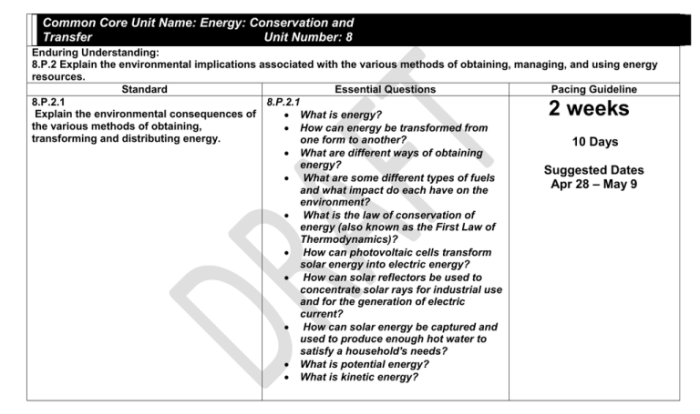The DNA from the Beginning WebQuest Answer Key embarks on a comprehensive exploration of the fundamental principles of DNA, providing an authoritative and engaging guide to its structure, function, and applications. This comprehensive resource unravels the intricate tapestry of genetic material, illuminating its pivotal role in the symphony of life.
Delving into the molecular architecture of DNA, the answer key elucidates its double helix configuration, deciphering the significance of nucleotides and their precise pairing rules. It unveils the role of the sugar-phosphate backbone, providing a deeper understanding of DNA’s structural integrity.
DNA Structure and Components
DNA, or deoxyribonucleic acid, is the molecule that contains the instructions for an organism’s development and characteristics. It is made up of two long strands of nucleotides twisted into a double helix shape.
Each nucleotide consists of a sugar molecule, a phosphate molecule, and a nitrogenous base. The four nitrogenous bases are adenine (A), thymine (T), cytosine (C), and guanine (G). A always pairs with T, and C always pairs with G. This pairing is known as the complementary base pairing rule.
The sugar-phosphate backbone forms the sides of the DNA double helix, while the nitrogenous bases form the rungs of the ladder. The sequence of nitrogenous bases along the DNA molecule determines the genetic code for an organism.
DNA Replication
DNA replication is the process by which a cell makes a copy of its DNA before cell division. This process ensures that each new cell has a complete copy of the genetic information.
DNA replication begins when the DNA double helix unwinds and the two strands separate. Each strand then serves as a template for the synthesis of a new complementary strand. The enzyme DNA polymerase adds nucleotides to the growing DNA strand, following the complementary base pairing rule.
DNA replication is a semi-conservative process, meaning that each new DNA molecule consists of one original strand and one newly synthesized strand. This ensures that the genetic information is accurately transmitted from one generation of cells to the next.
DNA Transcription
DNA transcription is the process by which the information in DNA is used to create messenger RNA (mRNA). mRNA is a single-stranded RNA molecule that carries the genetic code from the nucleus to the cytoplasm, where it is used to direct protein synthesis.
Transcription begins when RNA polymerase binds to a specific region of DNA called the promoter. RNA polymerase then unwinds the DNA double helix and synthesizes an mRNA molecule complementary to one of the DNA strands. The mRNA molecule is then released from the DNA template and travels to the cytoplasm.
mRNA differs from DNA in two ways. First, mRNA contains the nitrogenous base uracil (U) instead of thymine (T). Second, mRNA is single-stranded, while DNA is double-stranded.
DNA Translation: Dna From The Beginning Webquest Answer Key
DNA translation is the process by which the information in mRNA is used to create proteins. Proteins are essential for the structure and function of cells.
Translation begins when a ribosome binds to an mRNA molecule. The ribosome then moves along the mRNA molecule, reading the sequence of codons. Each codon consists of three nucleotides and codes for a specific amino acid. The ribosome adds the corresponding amino acid to a growing polypeptide chain.
The genetic code is universal, meaning that the same codons code for the same amino acids in all organisms. This allows for the accurate translation of genetic information from one organism to another.
DNA Mutations
DNA mutations are changes in the sequence of nucleotides in DNA. Mutations can be caused by a variety of factors, including errors during DNA replication, exposure to radiation or chemicals, and viral infections.
There are different types of DNA mutations, including point mutations, insertions, and deletions. Point mutations involve the substitution of one nucleotide for another. Insertions involve the addition of one or more nucleotides to the DNA sequence. Deletions involve the removal of one or more nucleotides from the DNA sequence.
Mutations can have a variety of consequences, depending on the type of mutation and the location of the mutation in the DNA sequence. Some mutations are silent, meaning that they do not have any effect on the organism. Other mutations can be harmful, leading to genetic disorders or even death.
Applications of DNA Technology
DNA technology has a wide range of applications in various fields, including medicine, forensics, and biotechnology.
In medicine, DNA technology is used for genetic testing, which can identify individuals who are at risk for developing certain genetic disorders. DNA technology is also used for gene therapy, which involves the insertion of healthy genes into cells to treat genetic disorders.
In forensics, DNA technology is used for DNA fingerprinting, which can identify individuals based on their unique DNA profile. DNA fingerprinting is used to solve crimes and to identify missing persons.
In biotechnology, DNA technology is used to create genetically modified organisms (GMOs). GMOs are organisms whose DNA has been altered in a way that does not occur naturally. GMOs are used to create new products and to improve the quality of existing products.
Query Resolution
What is the significance of the double helix structure of DNA?
The double helix structure of DNA ensures the accurate replication and transmission of genetic information during cell division.
How does DNA replication ensure genetic accuracy?
DNA replication employs a semi-conservative mechanism, where each newly formed DNA molecule contains one original strand and one newly synthesized strand, ensuring the preservation of genetic information.
What is the role of RNA polymerase in DNA transcription?
RNA polymerase binds to specific DNA sequences and synthesizes messenger RNA (mRNA), carrying genetic information from DNA to the ribosomes for protein synthesis.
